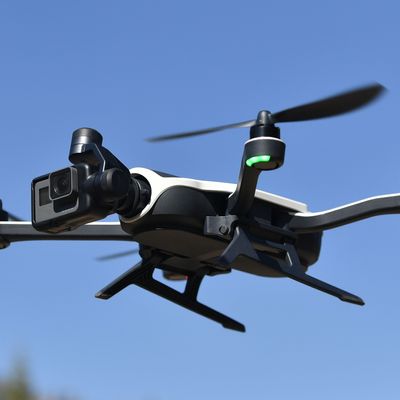
For the first time, ISIS has successfully used an explosive drone on the battlefield, raising questions about preparedness in the U.S. military and among its allies to combat these new airborne threats.
ISIS has repeatedly tried to use weaponized drones, but an attack on Kurdish forces in Northern Iraq on October 2 was the first attack to successfully cause casualties. Kurdish forces reportedly grounded a small drone on the battlefield and brought it back to their base to examine it. When they began to dismantle it, the drone exploded, killing two Kurdish soldiers and, according to Le Monde, injuring two French paratroopers that were supporting them.
ISIS has nothing like the United States’ sophisticated drone arsenal, and instead uses commercially available small drones — like the DJI Phantom, popular with hobby drone pilots.
Though smaller commercial drones have been used in warfare since at least the recent conflicts in Ukraine, this successful attack has left some saying that the U.S. has been caught unprepared, as the military continues to look for effective ways to take down and incapacitate drones.
Others disagree, saying that the Pentagon has already spent huge amounts of money and time on the drone problem.
One potential product of its efforts is a “drone rifle,” a picture of which was tweeted by Peter Singer, a co-author of the book Ghost Fleet and a fellow at the New America Foundation. The rifle, called the DroneDefender, doesn’t shoot bullets but uses radio frequencies to disrupt the drone’s functionality. The problem, critics say, is that while the United States now has the means to take on drones, our allies don’t necessarily have access to the same technology and training.
Still, it seems that ISIS’s recent success has at least partially caught the military off-guard. As recently as last summer the Pentagon requested an extra $20 million in funding to fight drones. Even more recently, both the Central Intelligence Agency and the Defense Intelligence Agency were scrambling to complete confidential assessments about the Islamic State’s drone abilities.
The Defense Advanced Research Projects Agency has now said that it wants every part of the military working toward the goal of developing effective anti-drone lasers by 2020.
There is no doubt that ISIS’s use of drones is becoming more sophisticated. Not long ago, ISIS only used drones to film terror attacks to use in propaganda films or for battlefield surveillance.
In August, ISIS was calling on its followers to attach bombs to small drones and use them to attack the Olympics, though no attempted attacks in Rio were ever reported.
Then, last week, Iraqi forces shot down a drone with an explosive strapped to it. It did not go off, but later in the week an explosive drone deployed at a checkpoint in Iraq failed to cause any casualties, but did destroy a building.
The sophistication of the most recent drone attack — a small but sufficiently powerful explosive was hidden inside the drone, disguised as a battery — represents a disturbing trend. So far the United States is responding to drone warfare with targeted air strikes — at least eight in the last 18 months — aimed at destroying ISIS drones before they even take flight.
In a copy of a report by the Combating Terrorism Center at West Point provided to the New York Times, experts say that as the capacities of easy-to-find store-bought drones continue to improve — both in terms of range and potential payload — weaponized drones will only become more commonplace and more deadly.





























